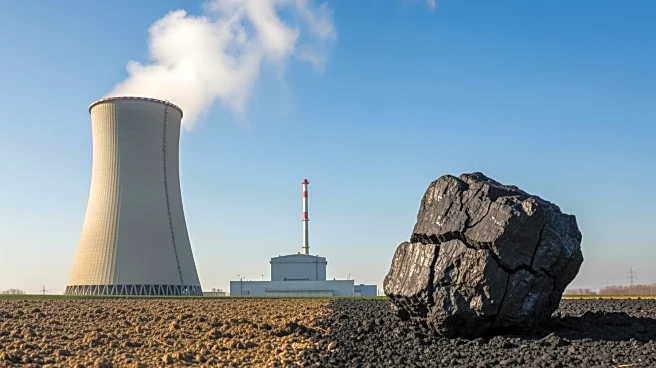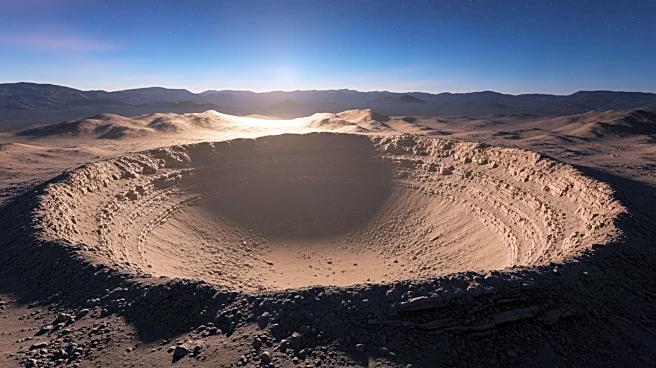What's Happening?
Researchers from China have discovered the Jinlin crater, the largest known impact structure from the Holocene epoch, located in Zhaoqing, Guangdong Province. The crater measures approximately 900 meters in diameter and 90 meters deep, surpassing the previous
record holder, Macha crater in Russia. Formed by a meteorite during the early-to-mid Holocene, the Jinlin crater exhibits remarkable preservation due to granite layers containing quartz with planar deformation features, indicating intense shock pressures unique to celestial impacts. This discovery, published in Matter and Radiation at Extremes, provides valuable insights into Earth's impact history and the scale of extraterrestrial impacts during the Holocene.
Why It's Important?
The identification of the Jinlin crater significantly enhances the understanding of Earth's impact history, offering an objective basis for studying the distribution, geological evolution, and impact regulation of small extraterrestrial objects. The preservation of the crater, despite the region's climate conditions that accelerate erosion, highlights the geological differences across the planet that have erased many previous impact craters. This discovery underscores the importance of studying impact craters to gain insights into Earth's geological history and the potential risks posed by extraterrestrial objects. It also contributes to the broader field of planetary science and the study of celestial impacts.














